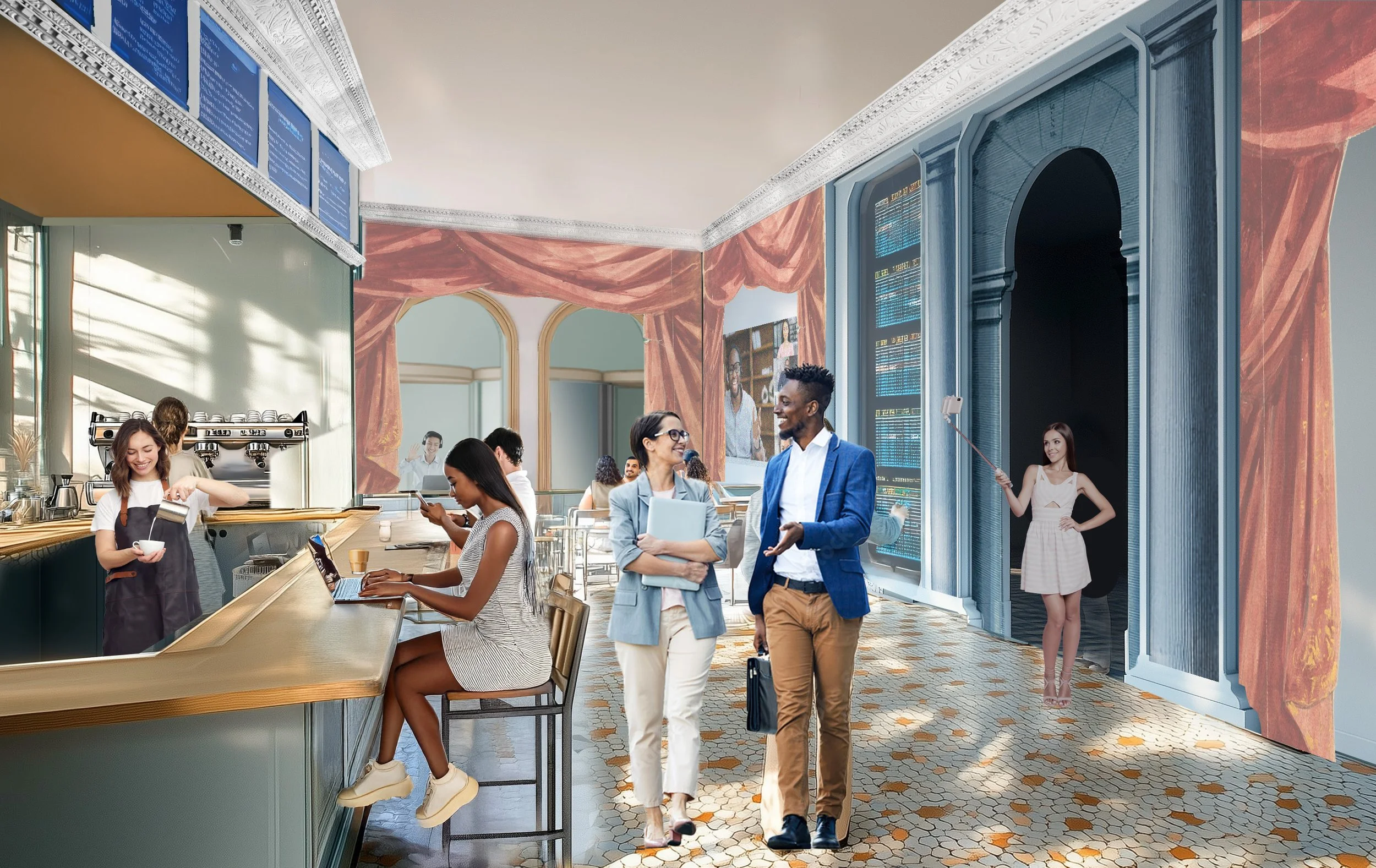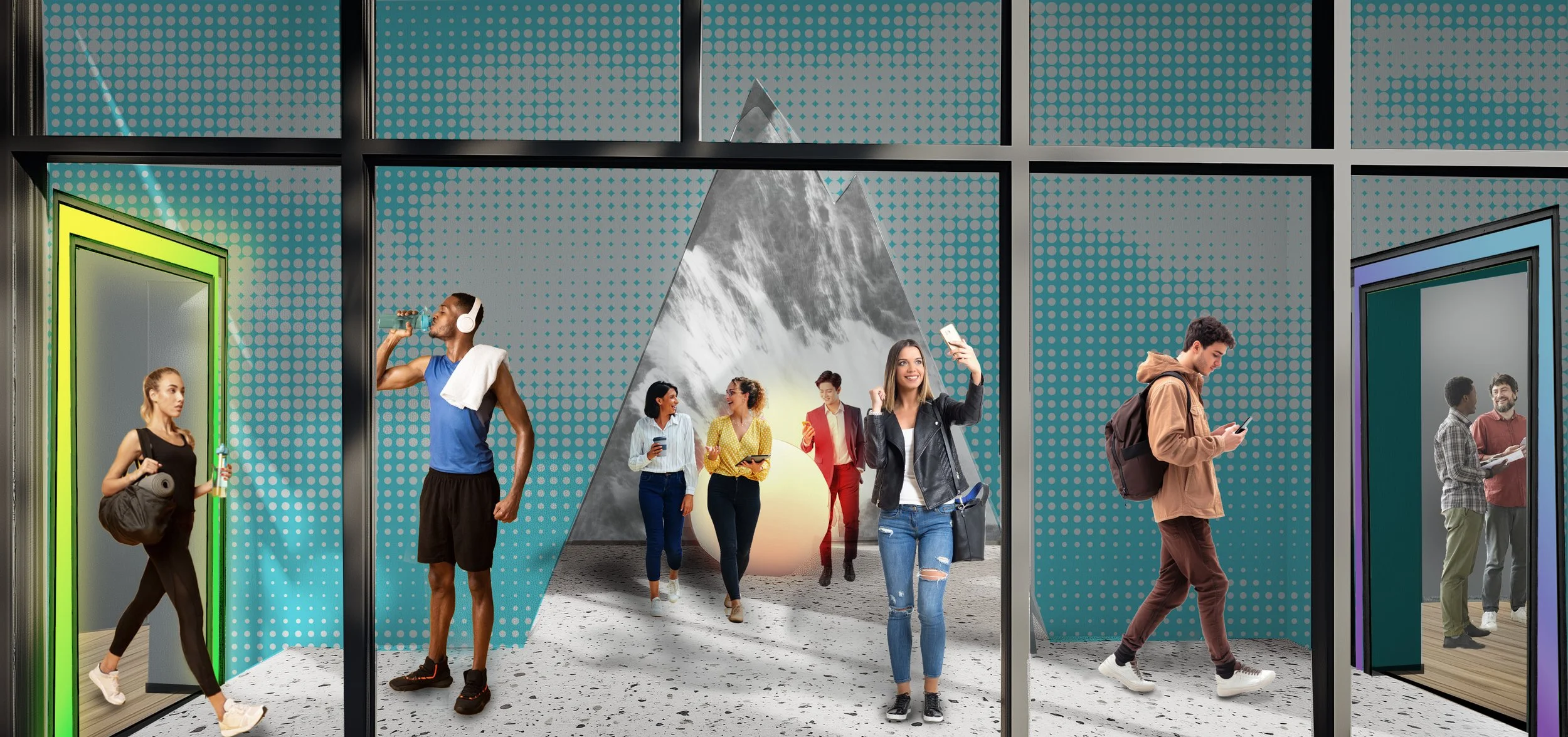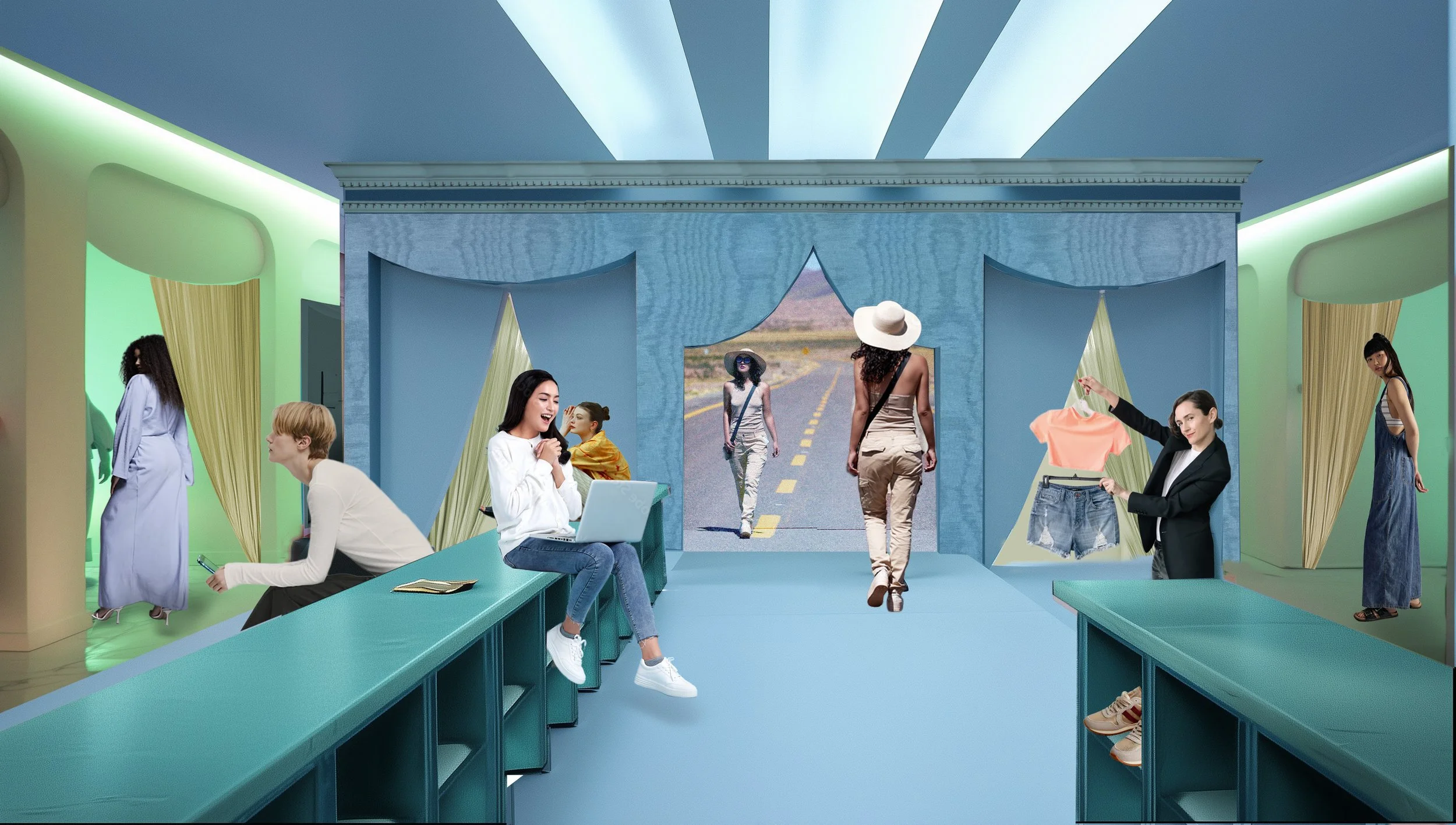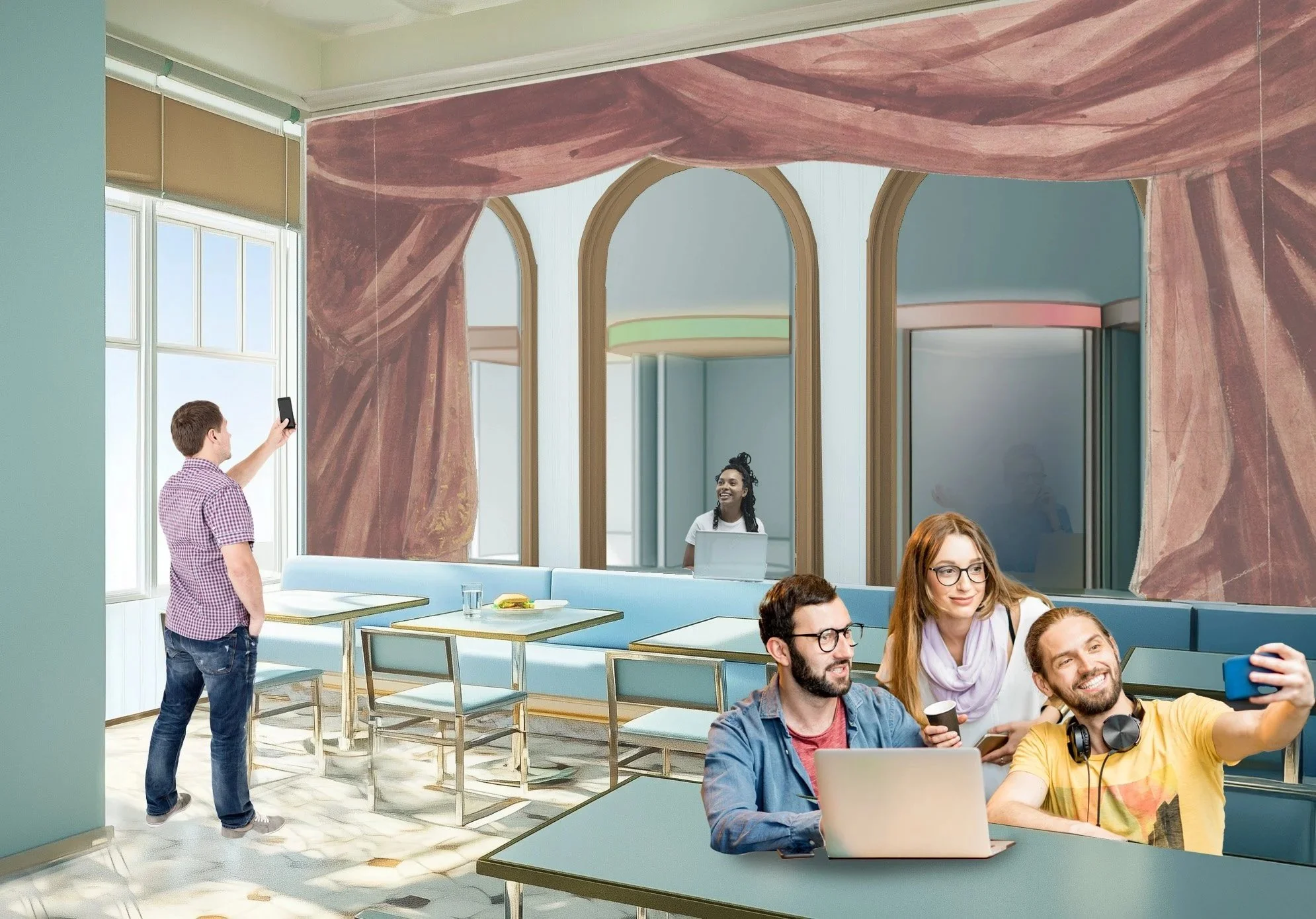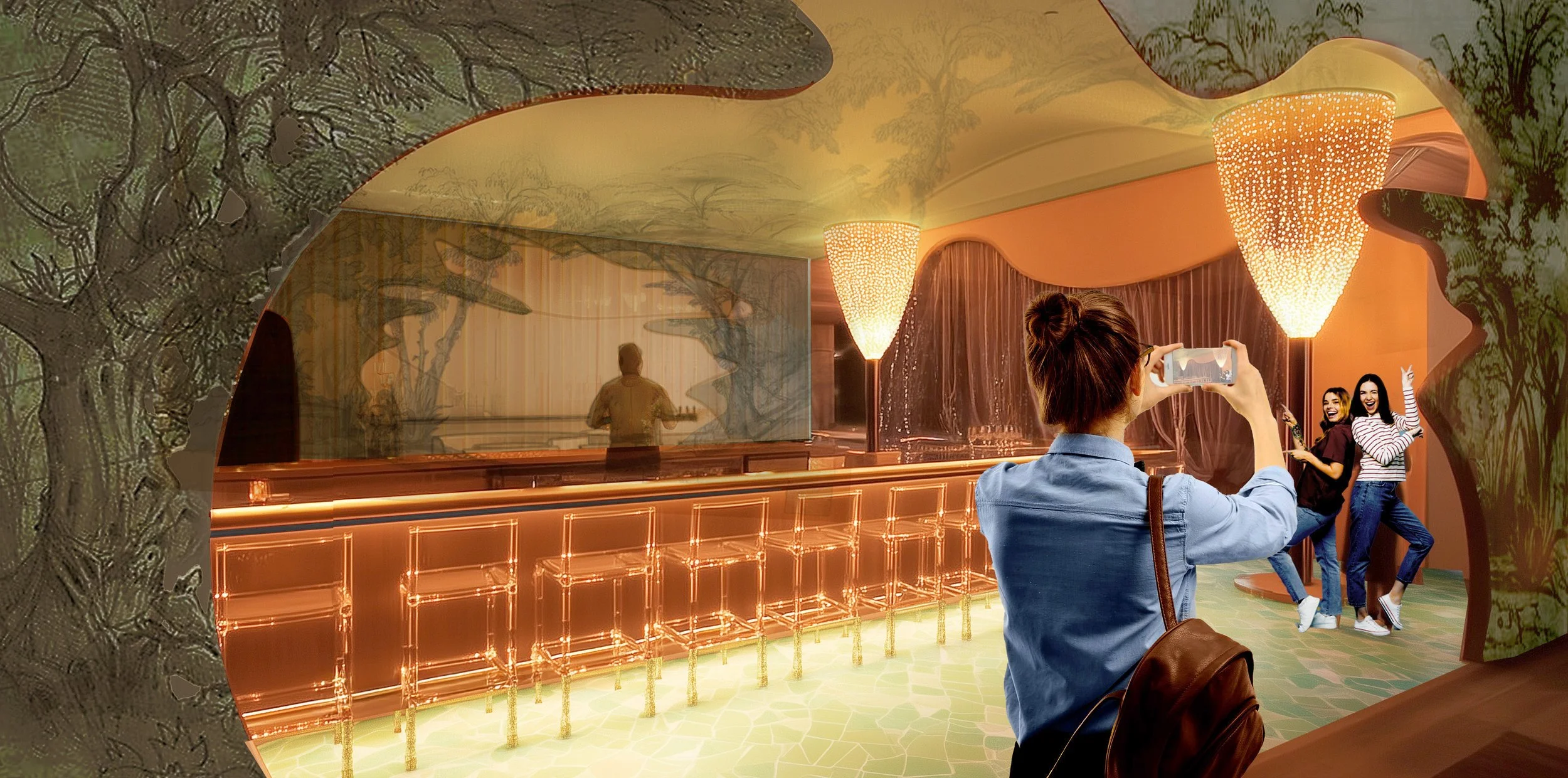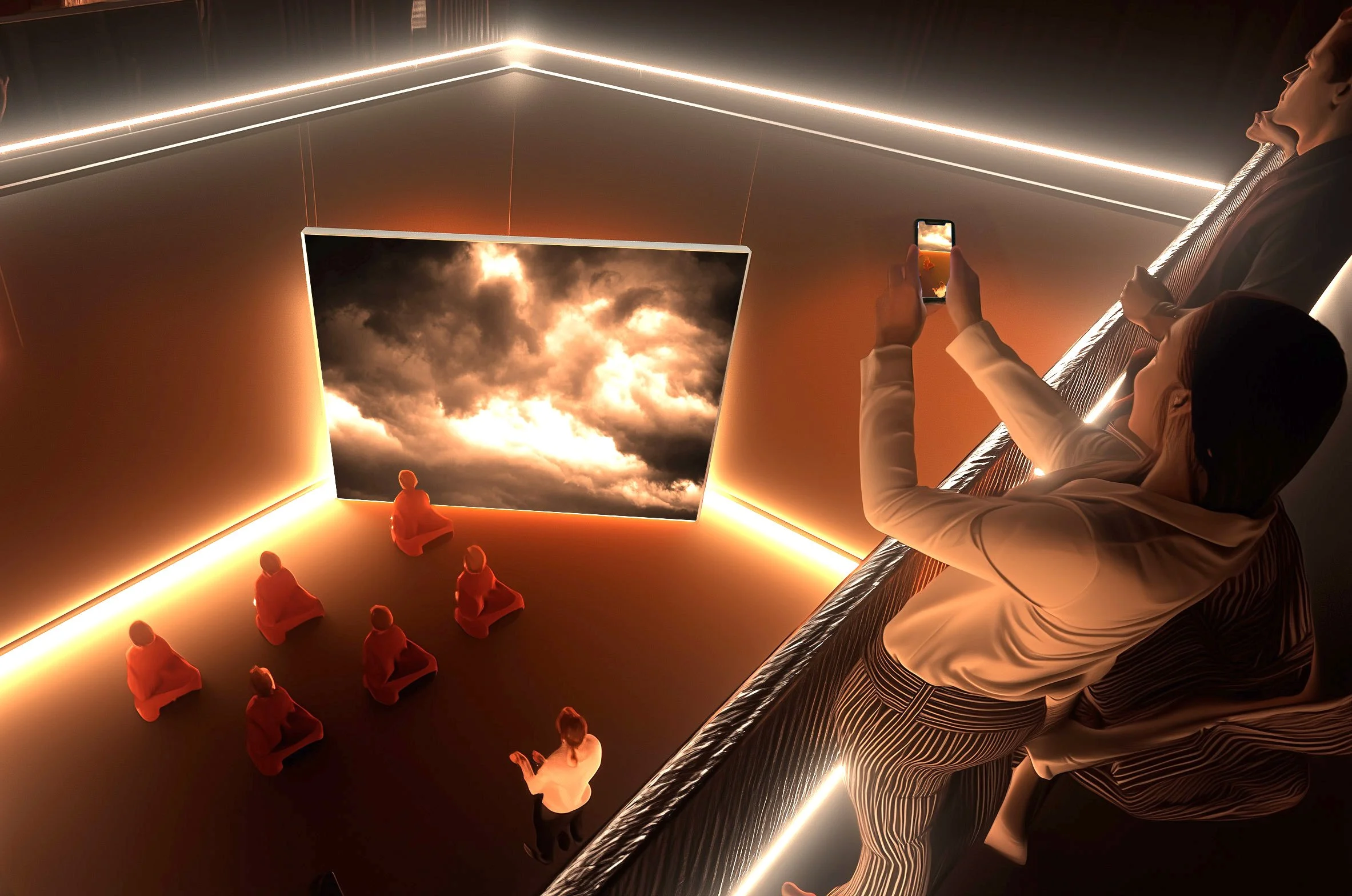Omnipresence: Adapting Interior Typologies for Phygital Embodiment
Emily Malina // Advisor: William Mangold
Omnipresence: Adapting Interior Typologies for Phygital Embodiment
Omnipresence means being in multiple places simultaneously. Screen-based tools are reshaping presence and embodiment by blending physical and digital realms; humans now exist in a phygital state. The digital age has absorbed many everyday embodied activities into virtual interactions, and in turn, people are bringing those virtual interactions into physical spaces. Historically, design has defined human activity within the physical environment—offices, for instance, facilitate work. Today, a smartphone can transform a desk into a retail store, a doctor’s office, or a family gathering. This thesis explores the omnipresent condition and examines how interior design can support phygital existence. Through a series of site and programmatic prototypes, it investigates design strategies that enhance the ease of phygital embodiment. Drawing from cinematic references, the thesis develops a material, aesthetic and detail approach that reflects today’s screen-based omnipresence and considers how interiors might better accommodate the fluid, multispatial nature of contemporary life.
Embodiment Studio
Media Hall Cafe
Well Being Centre
Social Fitting Room
Media Hall Refuge Seating
Media Hall Bar
Media Hall Catwalk Wing



